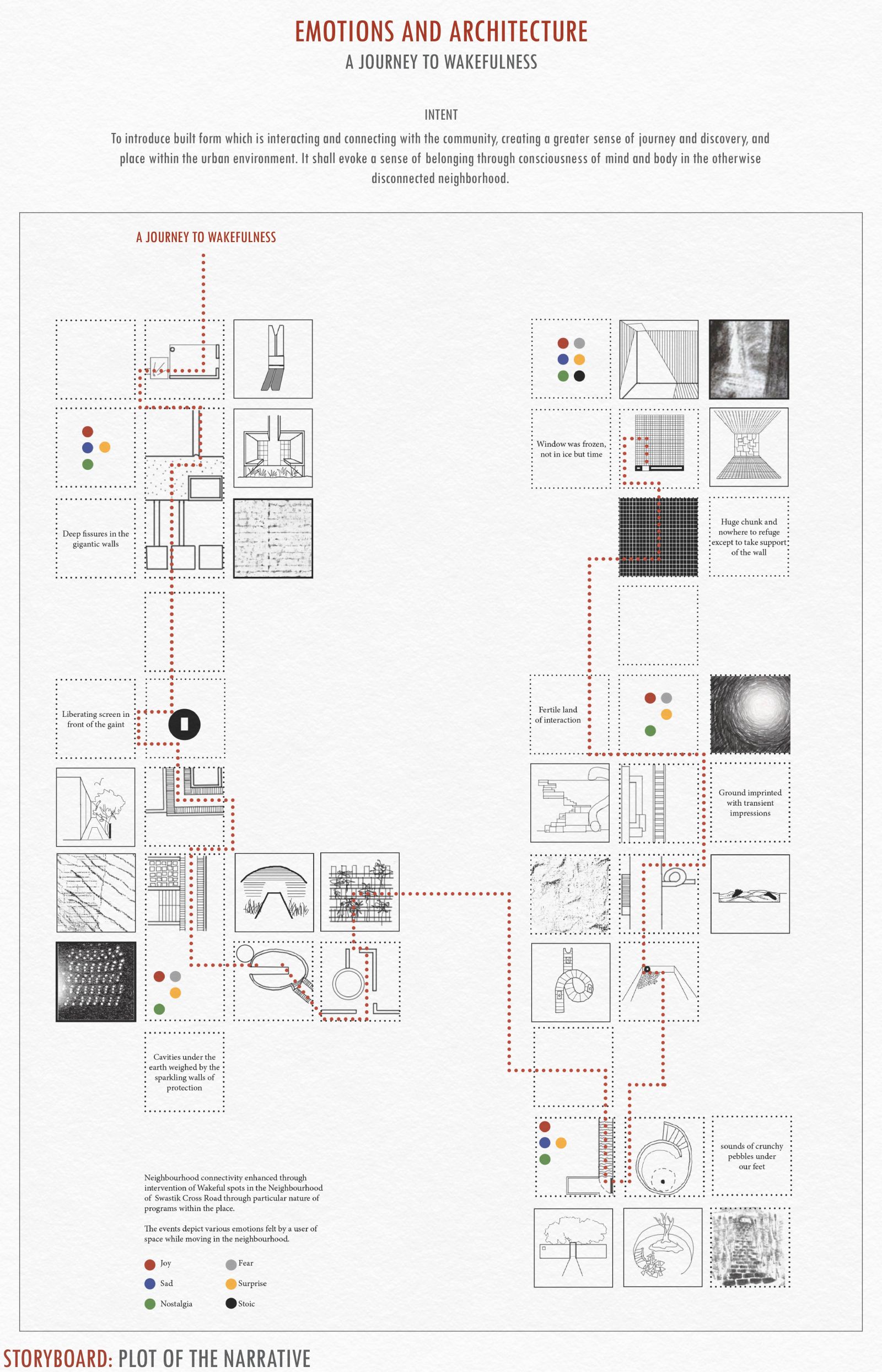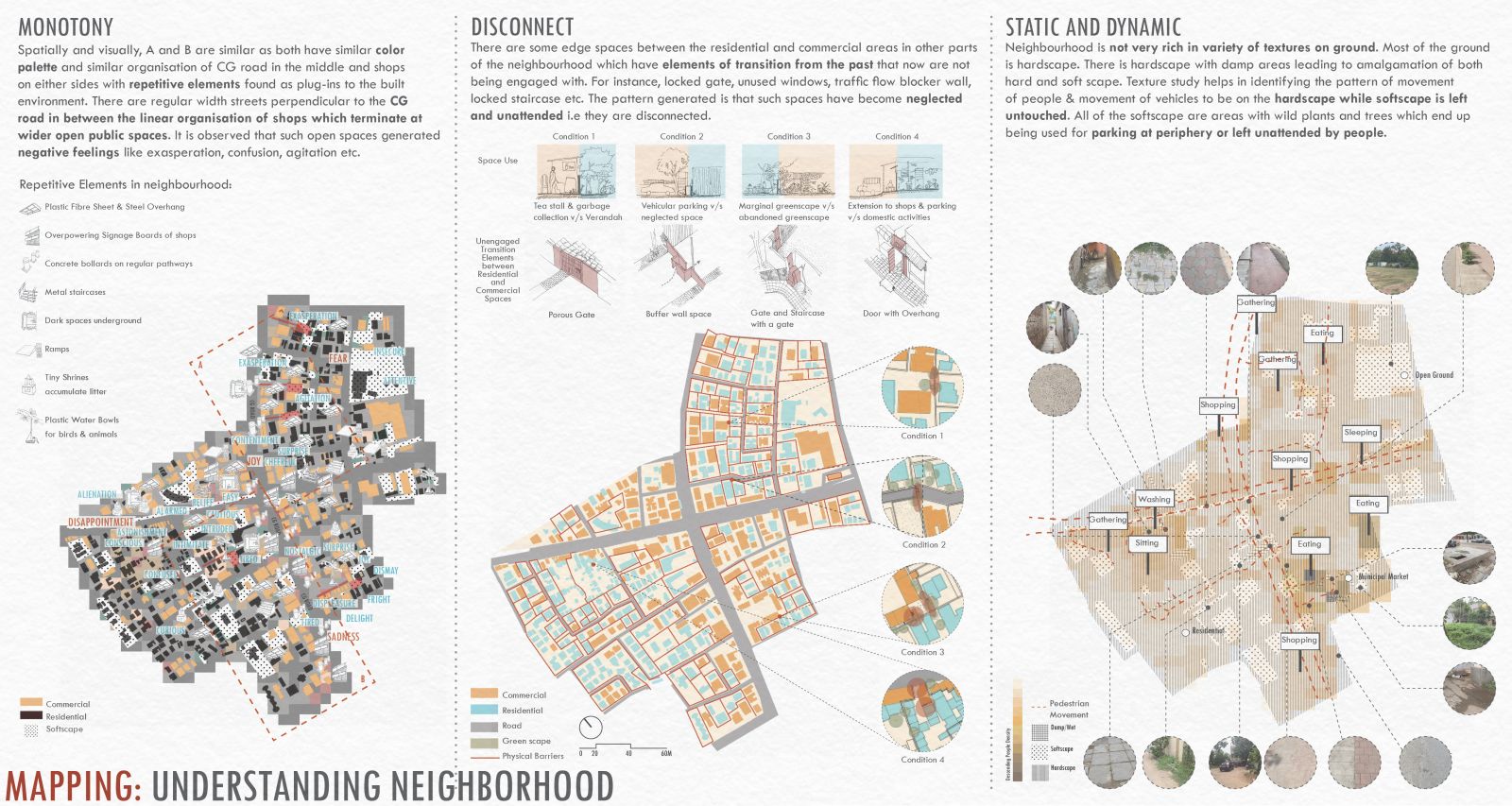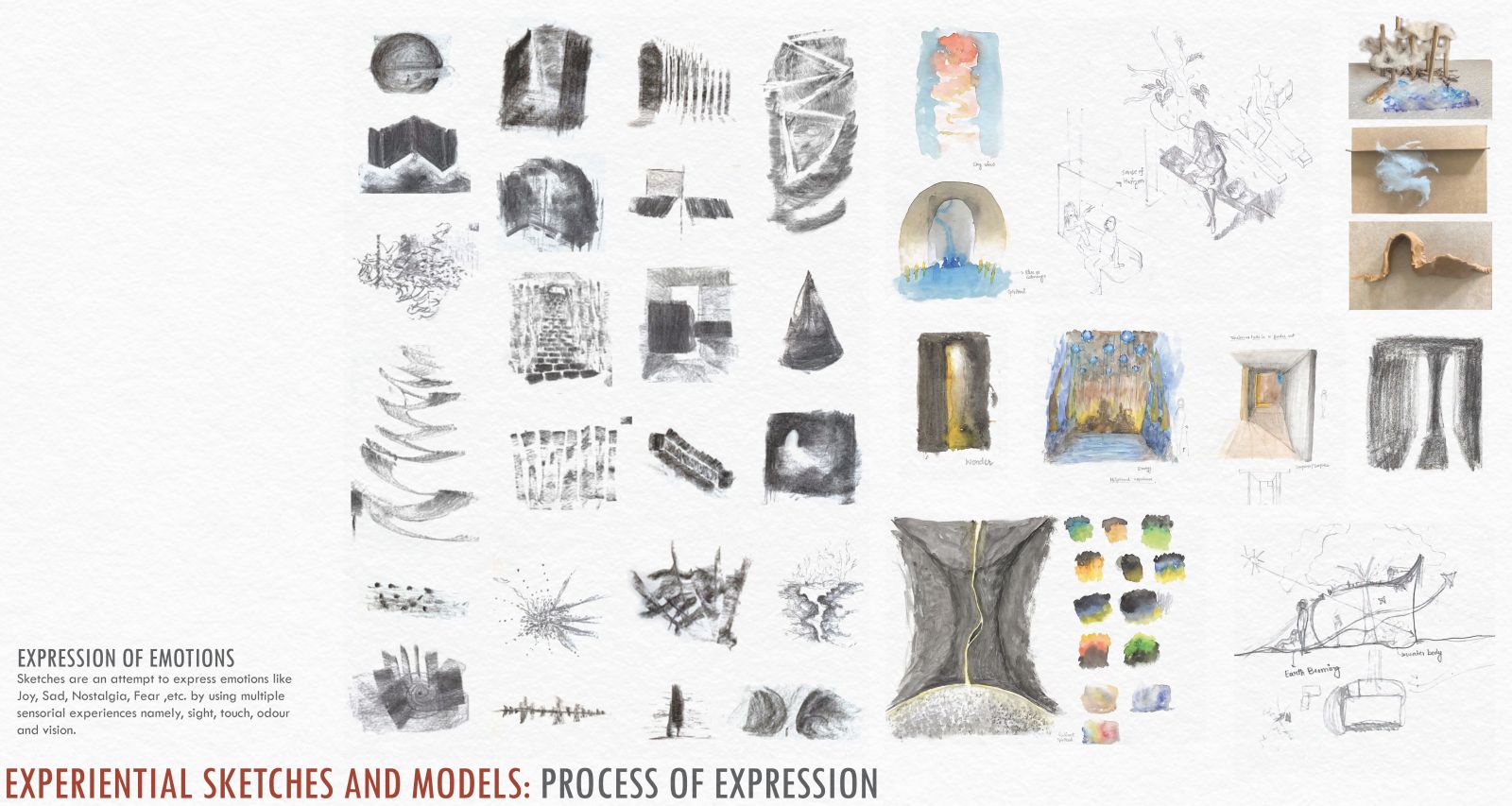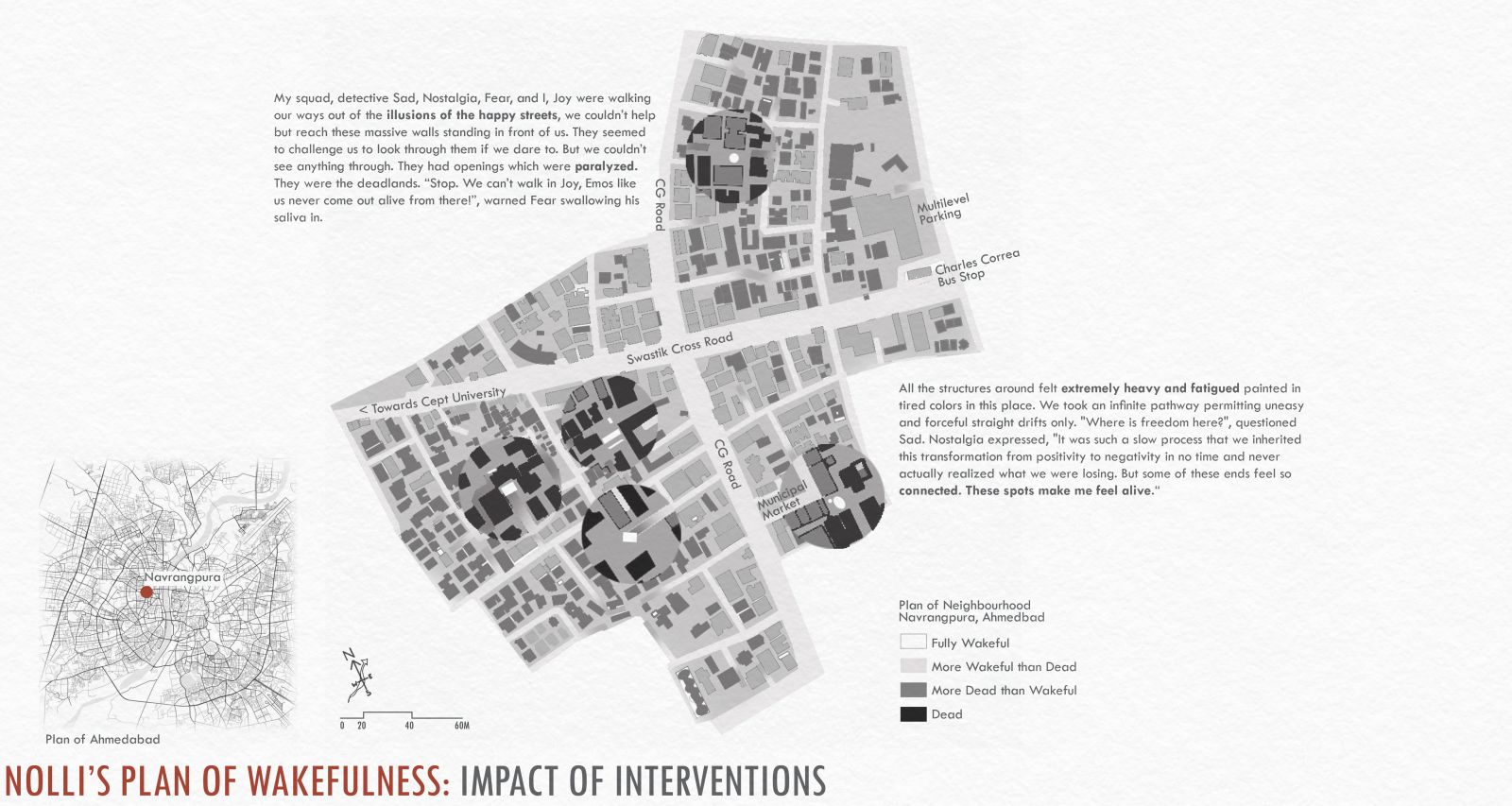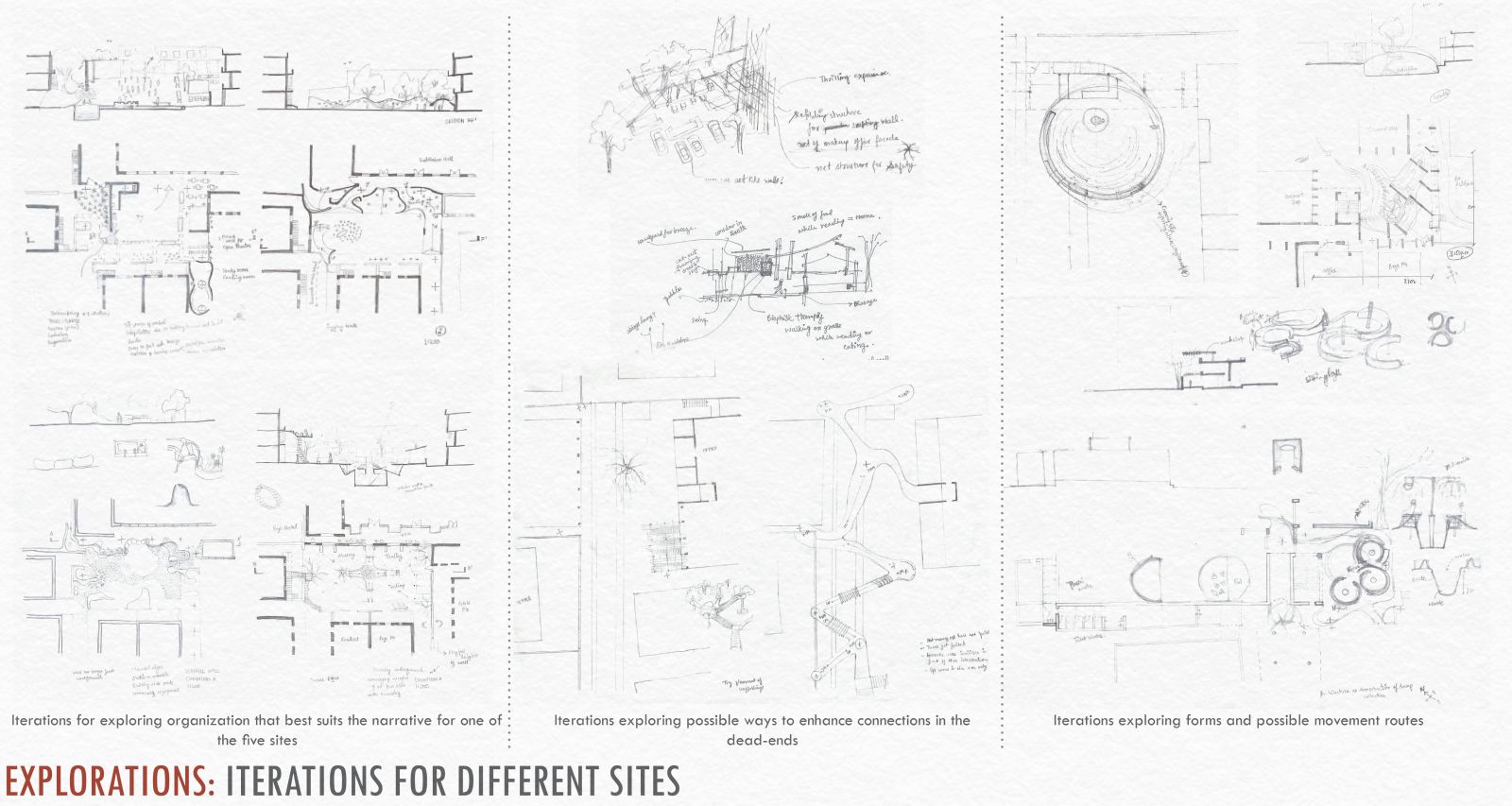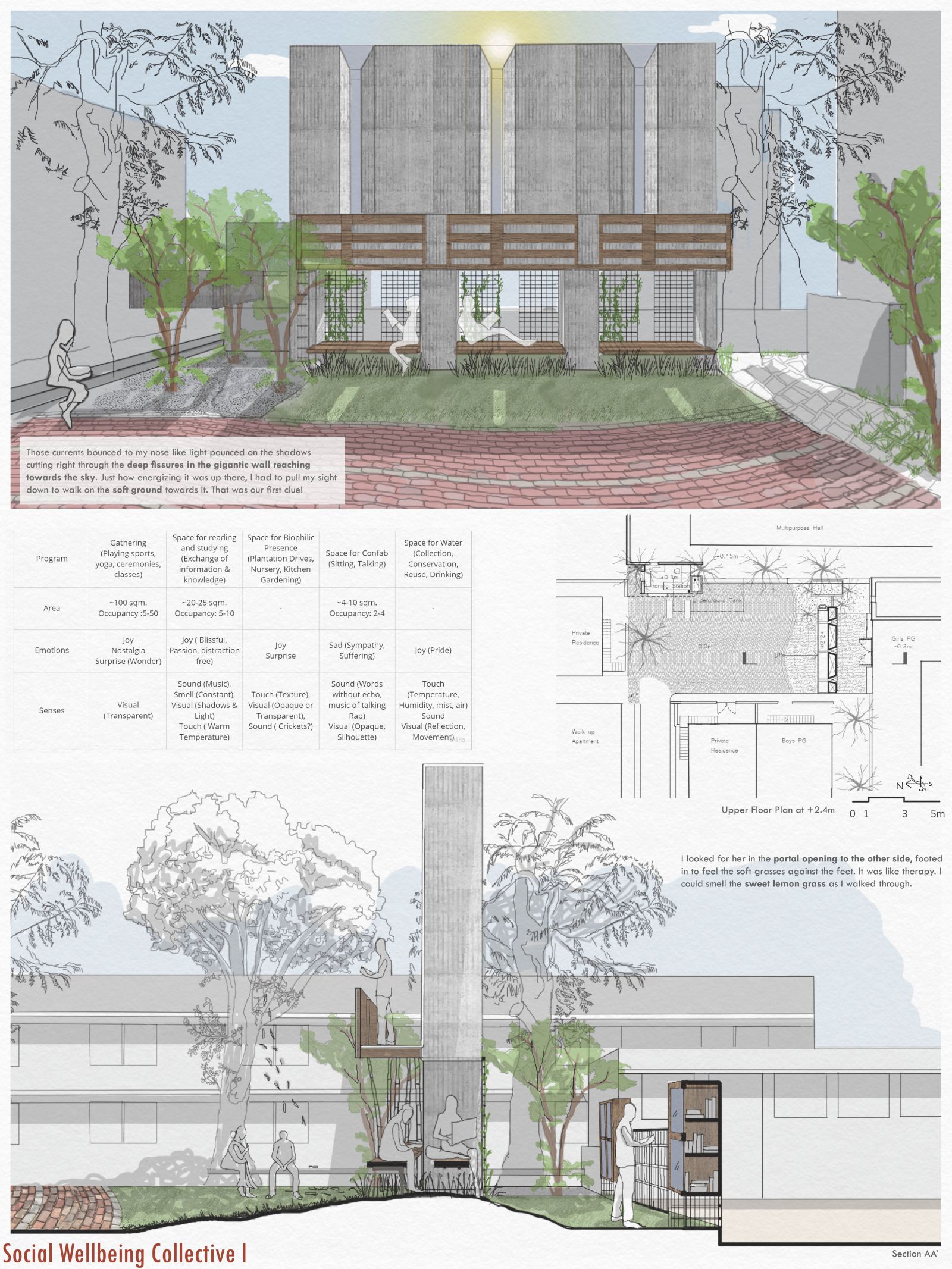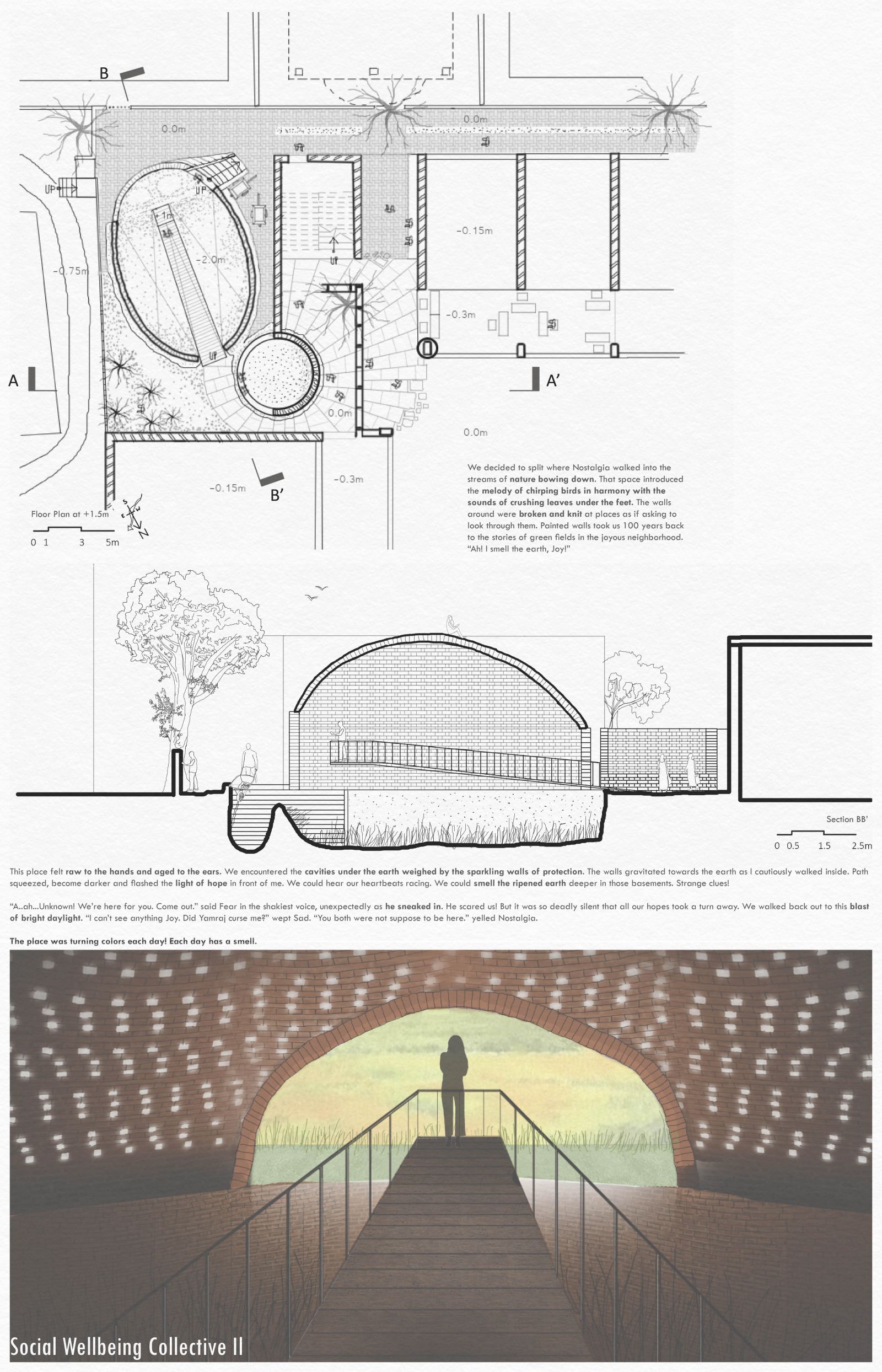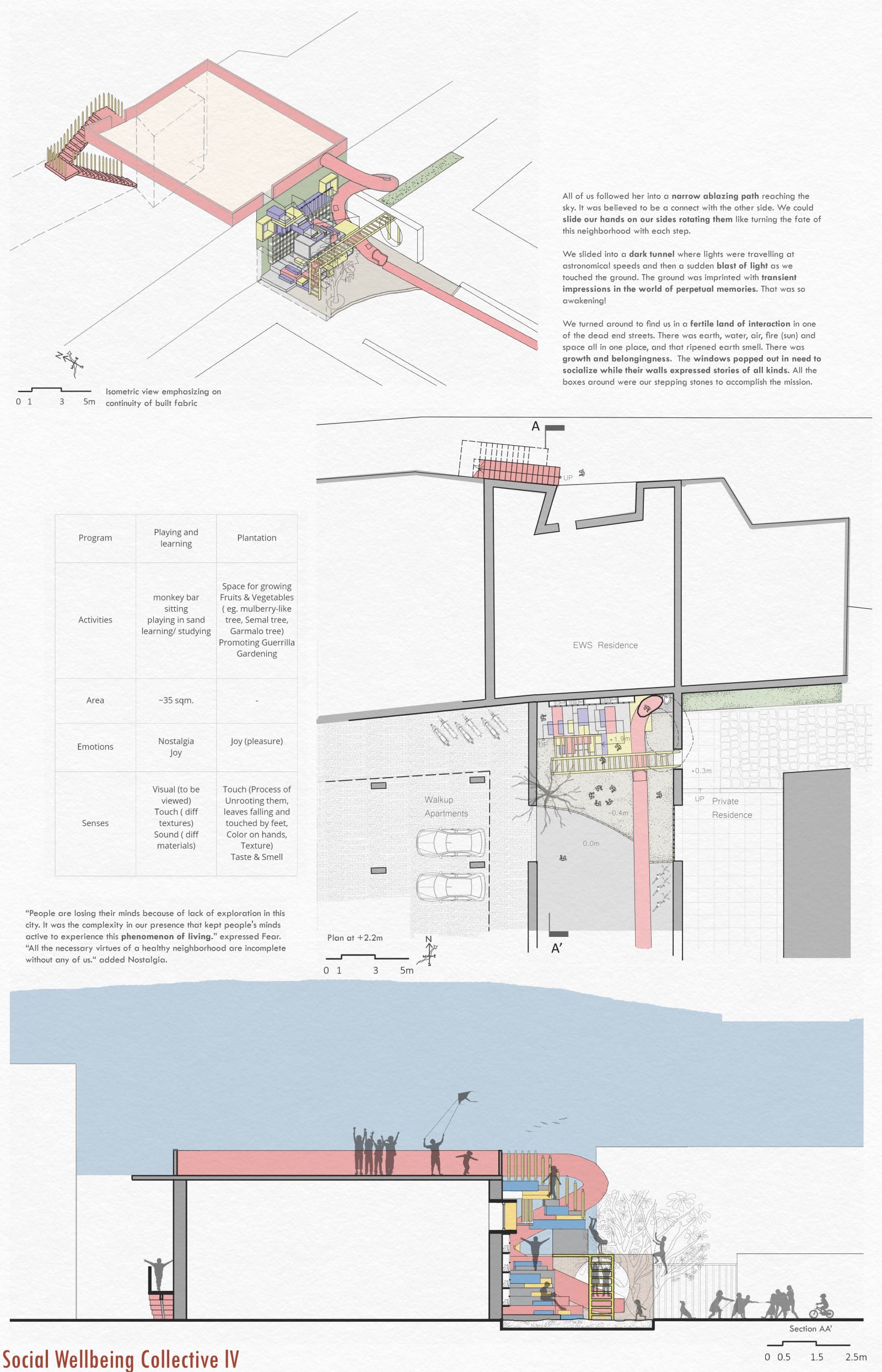Your browser is out-of-date!
For a richer surfing experience on our website, please update your browser. Update my browser now!
For a richer surfing experience on our website, please update your browser. Update my browser now!
Swastik Cross Road, as prominent in its presence as its scale, is the most eye catching landmark in the neighborhood. It attracts sellers (shop keepers and vendors), residents and visitors every day. There are shops lined up in the forefront, along the urban corridors of the Char Rasta while residential typology sit behind or above them. This part of the neighborhood is seen commercializing at a very fast rate. While everything else seems to be efficient and comfortable on site, there is a sense of monotony and disconnect observed in the neighborhood.
Also, at various spaces between commercial and residential buildings, there seems to be a loss of spatial connectivity which formerly existed at some point in time. These are the edge spaces that have become dull, abandoned and excluded. Hence, it is observed that sense of belonging in this diverse neighborhood is lost.
The empty transition/buffer spaces are reimagined to allow people to collaborate, celebrate their achievements as one, and grow together. Intervention shall aim at building compacter, and hence stronger collaborations amongst workers, residents and visitors which supports activities and aspirations that are found scattered on site.
'The built form shall be interacting and connecting with the community, creating a greater sense of journey and discovery, and place within the urban environment.' This will help elevate ‘what matters’ in a neighborhood.
The project is narrated by four emotions (Joy, Sad, Fear and Nostalgia) personified as actors, who are on their journey to achieve wakefulness in the dead neighborhood to bring back sense of belongingness amongst the neighbors.
